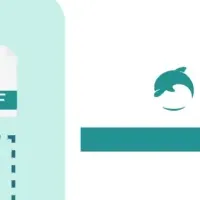
MicroAlgo Inc. Introduces Game-Changing Algorithm for Quantum Optimization
The Future of Optimization: MicroAlgo's Revolutionary CBQOA
MicroAlgo Inc. has just stepped into the spotlight of quantum computing with the unveiling of its latest development: the Classical Boosted Quantum Optimization Algorithm (CBQOA). This innovative technology integrates classical search techniques with the computational prowess of quantum systems to address constrained optimization challenges, a feat that has long eluded many in the industry.
What is the CBQOA?
The CBQOA is designed to merge the strengths of classical and quantum computing. Traditionally, quantum computing has been presented as a powerful tool for tackling complex problems, particularly combinatorial optimization. However, existing techniques often struggle when faced with constraints that require modifications to the cost function, leading to unnecessary computational difficulties.
With the CBQOA, MicroAlgo aims to solve optimization issues by keeping quantum state evolution confined to a feasible subspace, thus ensuring a more streamlined and efficient searching process.
Tackling Real-World Problems
Optimization problems are prevalent in various sectors, from portfolio optimization in finance to logistics scheduling and network routing. These practical applications necessitate finding solutions under numerous constraints, which classical algorithms have historically managed quite well. MicroAlgo's CBQOA aims to leverage these classical optimization strengths to boost the capabilities of quantum approaches.
Notably, the underlying mechanics of CBQOA include classical methods such as greedy algorithms and simulated annealing. By first identifying feasible solutions through these classical techniques, once a potential solution has been established, quantum computing takes the reins to refine and enhance it further.
How It Works
1. Initial Solution Generation: The algorithm initiates with classical optimization algorithms that quickly provide high-quality feasible solutions.
2. Quantum Refinement: Once an initial solution is found, the algorithm employs Continuous-Time Quantum Walk (CTQW) to explore the solution space. CTQW enhances the search efficiency by allowing quantum states to explore multiple solutions concurrently, thus increasing the chances of discovering an optimal solution.
3. Final Evaluation: Upon conclusion of the quantum search, classical evaluation mechanisms filter the results to ensure that the final solution meets all predefined constraints and achieves optimality.
The Road Ahead for Quantum Optimization
The introduction of CBQOA signifies a pivotal moment in the evolution of quantum optimization solutions. By sidestepping traditional reliance on cost functions, which can complicate the optimization process, MicroAlgo has paved an innovative path for future developments in this sphere.
The implications of this algorithm extend far beyond its immediate applications. As quantum computing hardware and software improve, CBQOA is set to become central to numerous industries, addressing complex optimization challenges that have historically posed significant hurdles.
Furthermore, the development of the CBQOA opens avenues for interdisciplinary collaboration, bridging computer science, operations research, artificial intelligence, and physics. Such integration will be vital in the coming age of quantum computing, where hybrid optimization strategies like CBQOA could redefine industry standards.
Conclusion
In a world increasingly driven by data and the need for optimized solutions, MicroAlgo Inc.'s Classical Boosted Quantum Optimization Algorithm stands out as a beacon of innovation. By merging classical methodologies with cutting-edge quantum techniques, MicroAlgo not only enhances the practical applicability of quantum computing but also propels the quest for efficient solutions to unprecedented heights. As industries gear up for the next phase of technological evolution, tools like the CBQOA will undoubtedly play a critical role in overcoming complex computational challenges.
Topics Business Technology)










【About Using Articles】
You can freely use the title and article content by linking to the page where the article is posted.
※ Images cannot be used.
【About Links】
Links are free to use.